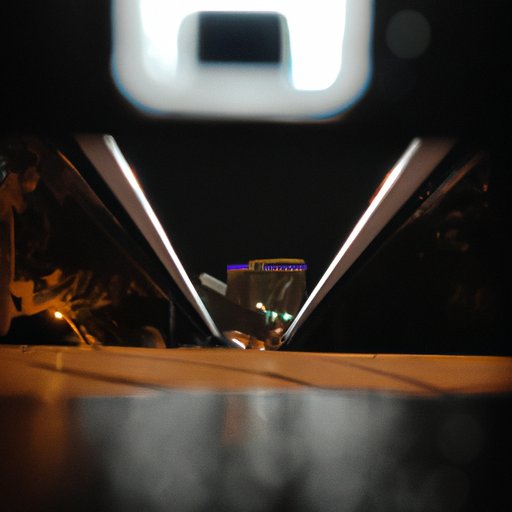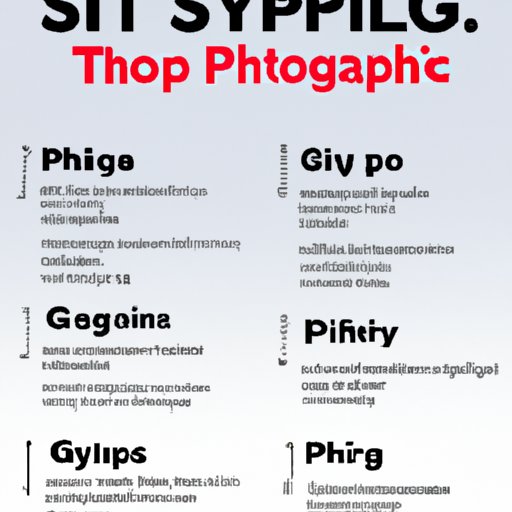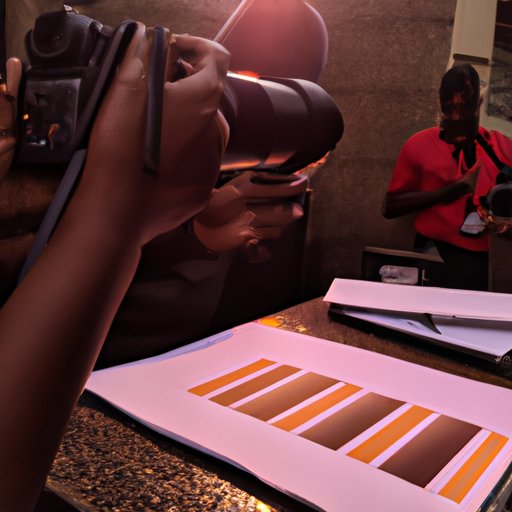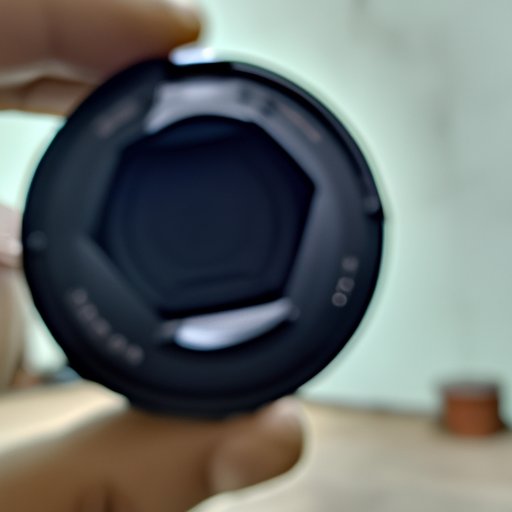Introduction
Photography is an art form that has been around for centuries, and it continues to evolve as technology advances. From film to digital, and from amateur to professional, there are many different types of photography and each one has its unique characteristics. Whether you’re a beginner or an experienced photographer, it’s important to familiarize yourself with the various genres, styles, and techniques of photography.

Exploring the Various Genres of Photography
Let’s take a look at some of the most popular genres of photography. Each genre has its own set of rules and techniques that make it unique.
Landscape Photography
Landscape photography is about capturing the beauty of nature. It includes capturing images of mountains, forests, oceans, rivers, deserts, and other natural landscapes. To create stunning landscape photos, photographers must understand how to use light, composition, and perspective to capture the beauty of nature.
Portrait Photography
Portrait photography focuses on capturing the personality of the subject. Photographers use a variety of techniques and lighting to create beautiful portraits. These can include traditional headshots and full-body shots as well as environmental portraits which take place in a specific setting or location.
Wildlife Photography
Wildlife photography is all about capturing the beauty of animals in their natural habitat. Photographers must have patience and be able to stay quiet and still for long periods of time to capture the perfect shot. They must also be aware of their surroundings so they don’t disturb the animals.
Macro Photography
Macro photography is the art of capturing small objects up close. This type of photography requires special equipment such as macro lenses and specialized lighting to achieve the desired effect. Macro photography is often used to capture insects, plants, and other small objects in great detail.
Still Life Photography
Still life photography is the art of capturing inanimate objects, such as food, flowers, and other everyday items. This type of photography requires careful composition and lighting to create beautiful and striking images.
Street Photography
Street photography is all about capturing candid moments in public places. This type of photography requires skill and creativity to capture fleeting moments that tell a story. Photographers must be quick on their feet and have an eye for the unexpected.
Sports Photography
Sports photography is all about capturing dynamic action shots. Photographers must have a good understanding of the sport they’re shooting and must be able to anticipate the movements of the athletes. They must also be able to use fast shutter speeds and have knowledge of the best angles to capture the perfect shot.
The Art of Capturing Images: A Look at Different Types of Photography
Now that we’ve explored some of the more popular genres of photography, let’s take a look at some of the more specialized types of photography.
Long Exposure Photography
Long exposure photography is a technique where the camera shutter is left open for a longer period of time to capture a scene over an extended period of time. This type of photography is often used to capture star trails, light streaks, and other night scenes. It requires the use of a tripod and a neutral density filter to reduce the amount of light entering the camera.
High Speed Photography
High speed photography is a technique used to capture fast-moving objects in sharp detail. This type of photography requires the use of specialized equipment such as high-speed cameras and flash units to freeze motion. High speed photography is often used to capture split-second moments such as bullets passing through apples or water droplets splashing.
Night Photography
Night photography is all about capturing the beauty of the night sky. This type of photography requires the use of specialized equipment such as a wide angle lens and a sturdy tripod to capture the stars and other celestial bodies. Photographers must also be aware of light pollution and use post-processing techniques to enhance their images.
Infrared Photography
Infrared photography is a technique used to capture light that is not visible to the human eye. This type of photography requires the use of specialized equipment such as an infrared camera and filters to capture the infrared light. Infrared photography can be used to capture landscapes, portraits, and other scenes in a unique way.
Light Painting Photography
Light painting photography is a creative technique used to create unique images using light. Photographers use long exposure times and special lighting tools such as glow sticks and LED lights to “paint” the scene. Light painting photography is often used to create abstract images and colorful patterns.

A Guide to Photographic Styles and Techniques
Now that we’ve explored the various genres and types of photography, let’s take a look at some of the different styles and techniques used by photographers.
HDR (High Dynamic Range) Photography
HDR photography is a technique used to capture a greater range of tones in a single image. This type of photography requires the use of multiple exposures to create a single image with a high dynamic range. HDR photography is often used to capture scenes with a wide range of light and dark areas.
Panoramic Photography
Panoramic photography is a technique used to capture a wider field of view than what is possible with a single frame. This type of photography requires the use of specialized equipment such as panoramic heads and tripods to capture multiple frames and then stitch them together to create a single wide-angle image.
Time-Lapse Photography
Time-lapse photography is a technique used to capture the passage of time in a single image. This type of photography requires the use of specialized equipment such as intervalometers and motion control systems to capture a series of images over a set period of time and then stitch them together to create a time-lapse video.
Black and White Photography
Black and white photography is a classic style of photography that focuses on capturing the beauty of light and shadows. This type of photography requires the use of specialized equipment such as black and white film or digital cameras and specialized software to convert color images into black and white.
Abstract Photography
Abstract photography is a creative style of photography that focuses on capturing non-representational images. This type of photography requires the use of creative composition and lighting to capture abstract shapes, patterns, and textures. Abstract photography is often used to create surreal and dream-like images.

Understanding the Different Types of Photography
Now that we’ve explored the different genres, styles, and techniques of photography, let’s take a look at the two main types of photography: digital and film.
Digital Photography
Digital photography is the most common type of photography today. This type of photography requires the use of digital cameras and specialized software to capture and edit images. Digital photography allows photographers to quickly review and edit their images to create stunning photographs.
Film Photography
Film photography is an older style of photography that requires the use of film cameras and specialized film processing techniques. This type of photography has a distinct look and feel that cannot be replicated with digital cameras. Film photography is often used by professionals and enthusiasts who appreciate the look and feel of traditional film.
Aerial Photography
Aerial photography is a specialized type of photography that requires the use of aircraft to capture images from above. This type of photography is often used to capture images of cities, landscapes, and other large areas from a unique perspective.
A Beginner’s Guide to Different Types of Photography
Now that you have a better understanding of the different types of photography, let’s take a look at what you need to know before getting started.
What You Need to Know Before Starting
Before you begin your journey into photography, it’s important to understand the basics. Learn the fundamentals of photography such as composition, lighting, and post-processing to ensure that your images are well-executed. You should also research the different types of photography to determine which one is right for you.
Tips for Picking the Right Camera
When it comes to choosing the right camera for your needs, there are a few things to consider. First, decide whether you want to invest in a digital or film camera. Then, consider the features of the camera such as megapixels, ISO range, and lens compatibility. Finally, decide on a budget and find a camera that fits within it.
Choosing the Right Lens
Once you’ve chosen a camera, it’s time to choose the right lens. Lenses come in a variety of sizes and focal lengths, and each one offers different benefits. Consider the type of photography you plan to do and then choose a lens that will help you achieve your goals.
Learning the Basics of Lighting
Lighting plays an important role in photography, and it’s important to understand the basics. Learn how to use natural light, artificial light, and reflectors to create the perfect lighting setup for your photos. You should also learn how to adjust your camera settings to get the most out of your lighting.
Editing Software to Enhance Your Photos
Post-processing is an important part of photography, and it’s important to have the right software for the job. There are many editing programs available, ranging from free to paid options. Choose the one that best suits your needs and practice using it to enhance your photos.
Conclusion
Photography is an ever-evolving art form, and there are many different types of photography to explore. From landscape and portrait to wildlife and infrared, each type of photography has its own unique characteristics. Take the time to research and understand the various genres, styles, and techniques of photography to become a better photographer.
(Note: Is this article not meeting your expectations? Do you have knowledge or insights to share? Unlock new opportunities and expand your reach by joining our authors team. Click Registration to join us and share your expertise with our readers.)
